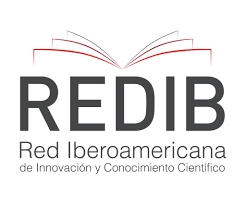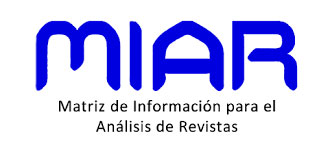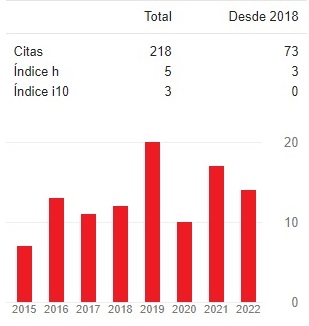A propósito de Frankenstein y el autómata de san Alberto Magno… o de por qué la belleza humana no es asunto de robots
DOI:
https://doi.org/10.51743/cpe.338Palabras clave:
robótica social, antropomorfización, disponibilidad, valle inquietante, belleza mecánicaResumen
El campo de la robótica social antropomórfica constituye uno de los territorios más interesantes para la reflexión filosófica contemporánea, por cuanto aúna en un mismo frente cuestiones de orden antropológico, ético y estético. Tomando como base la leyenda medieval del autómata de san Alberto Magno, el presente
trabajo señala los riesgos asociados a la mimetización robótica del ser humano cuando las presunciones teóricas sobre el mismo son deflacionarias de su complejidad. Presento, primero, un resumen del fenómeno del “valle inquietante” como respuesta estética de rechazo ante diseños robóticos que devalúan la complejidad formal y comportamental humana; seguidamente se estudian las soluciones más aceptadas desde el punto de vista ingenieril, basadas en diseños de apariencia conforme a un principio abstractivo más que imitativo; por último, tomando un ejemplo de performatividad robótica, argumento el irreductible carácter de la belleza y la creatividad humanas frente a sus conatos de imitación robótica.
Descargas
Estadísticas globales ℹ️
|
610
Visualizaciones
|
505
Descargas
|
|
1115
Total
|
|
Citas
Anzulewicz, H. (2011). Magie im Verstândnis Alberts des Grossen. En I. Atucha, D. Calma, C. König-Pralong & I. Zavattero (eds.). Mots médiévaux offerts à Ruedi Imbach (pp. 419-431). Fédération Internationale des Instituts d’Études Médiévales. DOI: https://doi.org/10.1484/M.TEMA-EB.4.00914
Bartneck, Ch., Kanda, T., Ishiguro, H. y Hagita, N. (2009). My robotic Doppelgänger. A critical look at the Uncanny Valley. En RO-MAN 2009 - The 18th IEEE International Symposium on Robot and Human Interactive Communication (pp. 269-276). I.E.E.E. DOI: https://doi.org/10.1109/ROMAN.2009.5326351 DOI: https://doi.org/10.1109/ROMAN.2009.5326351
Blow, M., Dautenhahn, K., Appleby, A., Nehaniv, C., and Lee, D. (2006). Perception of robot smiles and dimensions for human-robot interaction design. En RO-MAN 2006 - The 15th IEEE International Symposium on Robot and Human Interactive Communication (pp. 469-474). I.E.E.E. DOI: https://doi.org/10.1109/ROMAN.2006.314372 DOI: https://doi.org/10.1109/ROMAN.2006.314372
Borgnet, A. (ed.) (1890). B. Alberti Magni Ratisbonensis Episcopi, Ordinis Praedicatorum, Opera Omnia, ex editione Lugdunensi religiose castigata, etc. (5 vols). Ludovicum Vivès, Bibliolam Editorem.
Budd, M. (2014). La apreciación estética de la naturaleza. Antonio Machado Libros. Publicación original de 2002.
Burgar C, Lum P, Shor P, van der Loos, H. (2002). Development of robots for rehabilitation therapy: The Palo Alto VA/Standford Experience. Journal of Rehabilitation Research and Development, 6(37): 663-673.
Compagni, V.P. (ed.) (1992). Cornelius Agrippa. De Occulta Philosophia Libri Tres. E.J. Brill.
Diel, A., Weigelt, S. y MacDorman, K. F. (2022). A meta-analysis of the uncanny valley’s independent and dependent variables. ACM Transactions on Human-Robot Interaction, 11(1), 1-33. DOI: https://doi.org/10.1145/3470742
Diehl, J.J., Schmitt, L.M., Villano, M. y Crowell, Ch. (2012). The clinical use of robots for individuals with autism spectrum disorders: a critical review. Research in Autism Spectrum Disorders, 6(1), 249-262. DOI: https://doi.org/10.1016/j.rasd.2011.05.006
Ishiguro, H. y Nishio, Shuichi (2018). Building artificial humans to understand humans. En Geminoid Studies. Science and Technologies for Humanlike Teleoperated Androids (pp. 21-38). Springer. DOI: https://doi.org/10.1007/978-981-10-8702-8_2
Jochum, E. y Goldberg, K. (2016). Cultivating the uncanny: The Telegarden and other oddities. En Herath, D., Kroos, Ch. y Stelarc (eds.). Robots and Art. Exploring an Unlikely Simbiosis (pp. 149-176). Springer. DOI: https://doi.org/10.1007/978-981-10-0321-9_8
Kang, M. & Halliburton, B. (2020). The Android of Albertus Magnus: a legend of artificial neing. En Cave, S., Dihal, K. y Dillon, S. (eds.). AI Narratives. A History of Imaginative Thinking about Intelligent Machines (pp. 72-94). Oxford University Press. DOI: https://doi.org/10.1093/oso/9780198846666.003.0004
Kant, I. (2003). Crítica del discernimiento. A. Machado Libros. Original de 1790.
MacDorman, K. F. (2019). La Vallée de l’Étrange de Masahiro Mori. e-Phaïstos [En línea], 7(2): consultado el 27 de julio de 2022. URL: http://journals.openedition.org/ephaistos/5333; DOI: https://doi.org/10.4000/ephaistos.5333 DOI: https://doi.org/10.4000/ephaistos.5333
Mahoney, R.M., Machiel van der Loos, H.F., Lum, P.S. y Burgar, C. (2003). Robotic stroke therapy assistant. Robotica, 21(1), 33-44. DOI: https://doi.org/10.1017/S0263574702004617 DOI: https://doi.org/10.1017/S0263574702004617
Marcos, A. La inteligencia artificial y el efecto Toy Story. Proyecto SCIO Red de investigaciones filosóficas José Sanmartín Esplugues. https://proyectoscio.ucv.es/actualidad/la-inteligencia-artificial-y-el-efecto-toy-story-por-a-marcos/
Matarić, M.J., Eriksson, J., Feil-Seifer, D.J. y Winstein, C.J. (2007). Socially assistive robotics for post-stroke rehabilitation. Journal of NeuroEngineering and Rehabilitation, 4(5). DOI: https://doi.org/10.1186/1743-0003-4-5 DOI: https://doi.org/10.1186/1743-0003-4-5
Mori, M. (2012). The uncanny valley (K.F. MacDorman & Norri Kageki, trans.). IEEE Robotics and Automation, 19(2), 98–100. Publicación original de 1970.
Mori, M., MacDorman, K. F. & Kageki, N. (2012). The uncanny valley. IEEE Robot. Autom. Mag. 19: 98–100. DOI: https://doi.org/10.1109/MRA.2012.2192811 DOI: https://doi.org/10.1109/MRA.2012.2192811
Paré, Z. (2012). Le Bouddha dans le robot. Rencontre avec le professeur Masahiro Mori. Gradhiva 15: 162-181. DOI: https://doi.org/10.4000/gradhiva.2393 DOI: https://doi.org/10.4000/gradhiva.2393
Parsons, G. y Carlson, A. (2008). Functional beauty. Clarendon Press. DOI: https://doi.org/10.1093/acprof:oso/9780199205240.001.0001
Penny Cyclopaedia (1835). Charles Knight.
Platt, I. (1822). The book of curiosities;, or, Wonders of the great world: Containing an account of whatever is most remarkable in nature & art, science & literature. Caxton Press.
Pradier, A. (2021). Arte, estética y robots: para una filosofía de la interacción. Humanidades: revista de la Universidad de Montevideo, 10: 173-200. DOI: https://doi.org/10.25185/10.7 DOI: https://doi.org/10.25185/10.7
Pradier, A. (2019). Robótica, estética y antropología: problematizando el diseño antropomórfico. En Chillón, J.M., Martínez, Á. y Frontela, P. (eds.). Hombre y logos. Antropología y comunicación (pp. 305-320). Fragua.
Quintanilla, M.Á. (2017). Tecnología: un enfoque filosófico y otros ensayos de filosofía de la tecnología. Fondo de Cultura Económica. Original de 2005.
Reilly, K. (2011). Automata and Mimesis on the Stage of Theatre History. Palgrave MacMillan. DOI: https://doi.org/10.1057/9780230347540
Resnick, I.M. (2013). A Companion to Albert the Great. Theology, Philosophy, and the Sciences. Brill. DOI: https://doi.org/10.1163/9789004239739
Richardson, K. (2015). An Anthropology of robots and AI. Annihilation anxiety and machines. Routledge. DOI: https://doi.org/10.4324/9781315736426
Saleh, M.A., Hashim, H., Mohamed, N.N., Almisreb, A.A. y Durakovic, B. (2020). Robots and autistic children: a review. Periodicals of Engineering and Natural Sciences, 8(3), 1247-1262.
Shelley, M.W. (1818). Frankenstein; or, the Modern Prometheus (3 vols.) Lackington, Hughes, Harding, Mavoy, & Jones.
Sone, Y. (2017). Japanese robot culture. Performance, imagination, and Modernity. Palgrave Macmillan. DOI: https://doi.org/10.1057/978-1-137-52527-7
Sturlese, L. (1980). Saints et magiciens: Albert le Grand en face d’Hermès Trismégiste. Archives de Philosophie, 43(4), 615-634. https://www.jstor.org/stable/43034376
Tostado, A. (1728). Commentaria in secundam partem Numerorum, cum indicibus copiosissimis (2 vols.). Venetiis ex typographya Belloniana.
Trías, E. (2001). Lo bello y lo siniestro. Ariel. Original de 1982.
Vaughn, R.B.W. (1871). The Life & Labours of S. Thomas of Aquin (2 vols.). Longmans & Co.
Weinryb, I. (2016). The Bronze Objetc in the Middle Ages. Cambridge University Press. DOI: https://doi.org/10.1017/CBO9781316402429
Złotowski, J.A., Sumioka, H., Nishio, S., Glas, D.F., Bartneck, C. and Ishiguro, H. (2015) Persistence of the uncanny valley: the influence of repeated interactions and a robot's attitude on its perception. Frontiers in Psychology 6: 883, 1-9. DOI: https://doi.org/10.3389/fpsyg.2015.00883 DOI: https://doi.org/10.3389/fpsyg.2015.00883
Publicado
Cómo citar
Número
Sección
Licencia
El autor conserva los derechos patrimoniales (copyright) de las obras publicadas, y la revista favorece y permite la reutilización de las mismas, desde el preprint. Las obras se publican en la edición electrónica de la revista bajo una licencia “Creative Commons Atribución/Reconocimiento-NoComercial 4.0 Licencia Pública Internacional — CC BY-NC 4.0”, y se pueden copiar, usar, difundir, transmitir y exponer públicamente .
Los autor/es transfieren parcialmente los derechos de propiedad del presente trabajo para las ediciones impresas y online, siempre que:
- Se cite la autoría y la fuente original de su publicación (revista, editorial y URL de la obra).
- No se usen para fines comerciales.
- Se mencione la existencia y especificaciones de esta licencia de uso.
Se declara además haber respetado los principios éticos de investigación y estar libre de cualquier conflicto de intereses.
«C.P.E.» anima a los autores y a la comunidad científica a la máxima promoción y difusión de los trabajos en su versión definitiva a través de:
1) Su lista de contactos (mails) y redes sociales (Facebook, Twitter, LinkedIn…).
2) Repositorio institucional de su Universidad y repositorios públicos (Mendeley, Cosis…).
3) Redes sociales científicas (ResearchGate, Academia.edu, Kudos...).
4) Web personal o institucional, blog, etc.
5) Google Scholar, ORCID, ResearchID, ScopusID, Dimensions, PlumX...
6) Ejemplares impresos adquiridos directamente y enviados a especialistas para su lectura y posterior citación si procede.




















1.png)
1.png)

1.png)





.png)
.png)

.png)
1.png)
1.png)
